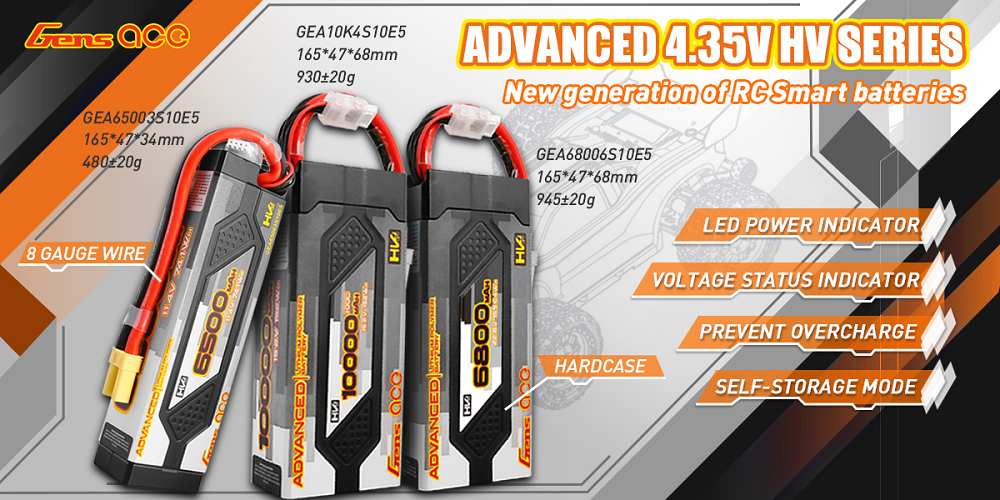Description
Gens ace Advanced G-Tech 4.35V HV Series, New generation of RC Smart batteries. The Advanced series design concept is based on being a more convenient, user friendly and safety oriented series of batteries.
We produce the high quality LiHv cells, hard-case, internal circuitry, power indicator lights and other smart features. The first concept of 4.35V high-voltage allows higher energy density and longer battery life. Each cell with 3.8V nominal voltage.
If your order contains lithium batteries, please do not choose expedited/air shipping/express if outside of the greater Sydney area as lithium batteries cannot be shipped by air.

Reviews:
Features:
- 4.35V HV
- Hard case smart battery
- LED power indicator
- Voltage status indicator
- Self-storage mode
- Prevent overcharge
- 8 gauge wire
Specifications:
- Capacity: 6800mAh
- Voltage: 22.8 V / 6S / 6 Cell
- Discharge Rate: 100C
- Weight: 963g
- Size: 165mm x 47mm x68mm (L x W x H)
- Connector Type: EC5
Application:
1/7 Scale, FELONY 6S BLX, LIMITLESS, INFRACTION 6S BLX.
Lipo Battery Safety
- Batteries should NEVER be left unattended while charging.
- Be absolutely sure that the Lithium Polymer charger settings are correct for the battery pack being charged – both voltage and current settings.
- Lithium Polymer must be CHARGED and STORED in a fire-safe container like a Lipo Sack.
- Do not charge batteries near flammable items or liquids.
- Keep a dry fire extinguisher nearby or a large bucket of dry sand, which is a cheap and effective extinguisher.
- Never charge inside an automobile even when parked.
- KEEP BATTERIES AWAY from children and pets at ALL times.
- Never discharge below 3.5V per cell as it may cause permanent damage and void warranty
- Battery may explode if damaged or disposed of in fire
- Never leave batteries inside a car on a hot day or any other place where temperature may exceed 140F / 60C.
- Although environmentally friendly, lithium polymer cells must be FULLY discharged before disposal. Use a resistor setup (light bulbs, for example) to accomplish this, to avoid the possibility of a short-induced fire after disposal.
- Immediately discharge damaged batteries at 1/2 C rate and dispose
- Do not put the loose cells in a pocket, bag, or drawer where they could short-circuit against other items, or the battery tabs could be pressed against each other.
- Take care that the cells are not punctured, especially by metallic objects like hobby knives.
- If the electrolyte in the cells should get on your skin, thoroughly wash with soap and water. If in the eyes, rinse thoroughly with cool water. Immediately seek medical attention for this, or for burns.










